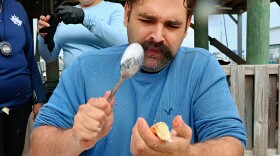For all the socializing that can't happen this year at the Olympic village because of COVID-19 restrictions, Olympic TikTok is giving everyone (those in Tokyo and those stuck at home) a socially distanced way to connect.
Hashtags like #olympictiktok, #tokyo2020 and #tokyoolympics are filled with videos from Olympians chronically their experiences in Tokyo (cardboard beds play a starring role), as well as from fans shipping their national team and favorite athletes from the comfort of home.
Here are just a few of our favorite athletes to follow:
Vermonter Ilona Maher has been carrying #teamusa on #olympictiktok. Starting with her highly scientific review of the cardboard beds, and carrying right on through to her relatable struggle to socialize during a pandemic (and of course her earnest curiosity about how Team USA skateboarders manage to be so cool,) Maher is a joy that's gotten us all hyped for Olympic rugby.
Hot on Maher's heels is fellow rugbier and Coloradoan Cody Melphy. He's been chronicling his journey to Tokyo and the behind-the-scenes of Olympic Village life, as well as answering followers' questions about the Games.
Laviai Nielsen, Team GB Track & Field
British sprinter Laviai Nielsen has been chronicling her Olympic adventure since the team left the U.K., filling us all with joy and running knowledge ever sense.
Raven Saunders, Team USA Track & Field
A shot-put superstar and South Carolinian, Raven Saunders is in Tokyo for her second Olympics and is sharing joy and hilarity from behind the scenes, including her review of the food at the athletes' dinning hall.
And of course, honorable mention to Laurie Hernandez, 2016 Olympic gymnast for Team USA, who is missing this year's competition due to a knee injury but traveled to Tokyo to cover the games for NBC.
This story originally appeared on the Morning Edition live blog.
Copyright 2021 NPR. To see more, visit https://www.npr.org.








